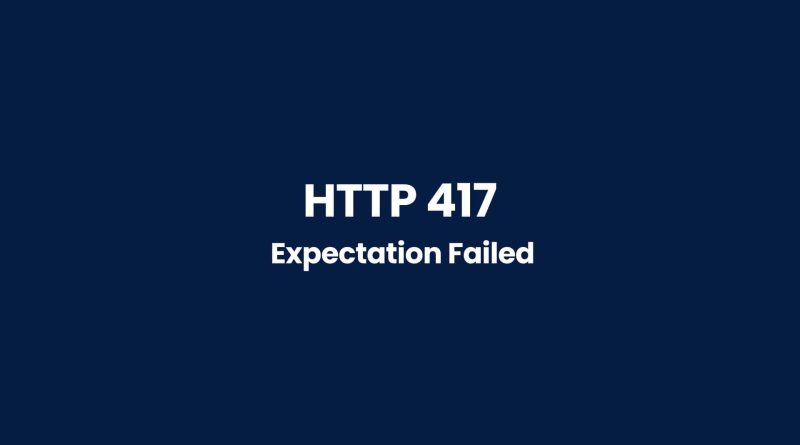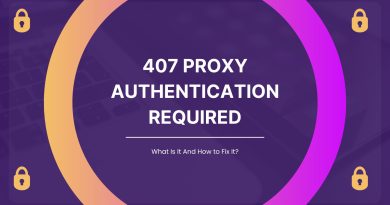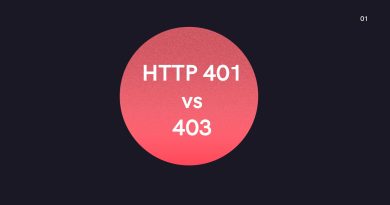The Ultimate Guide to Troubleshooting and Resolving HTTP 417 Errors
Are you having trouble troubleshooting and resolving HTTP 417 errors? Then this is the ultimate guide for you! This article will provide a comprehensive overview of what an HTTP 417 error is, how to identify it, and how to resolve it. After reading this article, any problem related to HTTP417 errors should become much easier for you to handle!
What Is 417 Http Status Code?
When a client sends an HTTP request, the server responds with an HTTP status code. The 417 status code is one of these codes of Hypertext Transfer Protocol (HTTP). This HTTP response indicates that the expectation set by the Expect header field in the request message was not met by the server due to exceeding predetermined timeouts or content length limitations indicated within a message body. Essentially, it means that something went wrong when attempting to fulfill a client’s request.

The 417 http status code is usually associated with incorrect usage of certain HTTP methods and headers, including GET and POST requests. It may also be caused by faulty syntax or inappropriate input parameters sent through the body of the message. In either case, this type of error generally occurs during communication between two web-based applications as opposed to end-user errors like 404 which are triggered by users entering invalid URLs into their browsers.
Cause Of 417 Http Status Code Error
When dealing with 417 HTTP status codes, it’s important to understand the cause of this error. By definition, a 417 is an ‘expectation failed’ response given by inbound servers when they do not receive the expected value from a request’s expect header field. This means that the expectation given was not met and as such could be caused by either server-side or client-side issues.
Some common causes of the 417 HTTP status code error include:
- Unsupported “Expect” header field: The server may not support the “Expect” header field sent by the client, or the header field may contain an unsupported value.
- Server configuration issues: The server may be misconfigured or may have a setting that prevents it from fulfilling the client’s request.
- Network connectivity issues: The client may be experiencing network connectivity issues that prevent it from communicating properly with the server.
- Request timeout: The client may have sent a request with an expectation that the server would respond within a certain amount of time, but the server failed to meet that expectation, resulting in a timeout.
Server Side Or Client Side Issue?
This type of issue can either reside on the client error or the server-side error. Depending on where the problem lies, different methods are required to resolve this issue.
If the cause of the 417 error is due to something on the server side, then it may require changes to how requests are processed and handled by your web server software before they reach their destination URL. It might also involve reconfiguring certain settings such as authentication protocols or other parameters associated with that particular request method.
On the other hand, if there appears to be a client-side issue at play, then resolving this error would likely involve inspecting any relevant headers sent along with each request and making sure they match what’s expected by your web application. Additionally, you should check for typos or invalid characters which could throw off the communication between your browser and server.
How To Fix 417 Http Status Code Error
When it comes to troubleshooting and resolving 417 HTTP status code errors, there are several steps you can take in order to fix the issue. This guide will help you identify what’s causing a 417 error on your website, as well as provide solutions for how to resolve it quickly and efficiently.
To fix the 417 HTTP status code error, also known as “Expectation Failed,” you can try the following solutions:
- Remove the “Expect” header: If the server does not support the “Expect” header field sent by the client, removing this header from the request may resolve the issue.
- Check server configuration: Ensure that the server is properly configured and able to fulfill the client’s request. Verify that any relevant settings or plugins are properly installed and configured.
- Increase request timeout: If the server is taking too long to respond to the client’s request, you can try increasing the request timeout setting.
- Check network connectivity: Ensure that the client’s network connectivity is stable and that it can properly communicate with the server. If necessary, you can try resetting your network connection or restarting your router.
- Contact the website or server administrator: If none of the above solutions work, you may want to contact the website or server administrator to report the issue and seek further assistance.
- Update or switch web browser: Sometimes, the browser may be the issue. Try updating your browser to the latest version, or try using a different browser to see if the issue persists.
- Disable any firewalls or antivirus software temporarily: Sometimes, firewalls or antivirus software can interfere with the communication between the client and the server. Temporarily disable any firewalls or antivirus software and check if the issue persists.
- Check for any proxy or VPN settings: If you are using a proxy server or VPN, check that the settings are correct and that they are not causing the issue. Try disabling any proxy or VPN settings temporarily and see if the issue is resolved.
- Clear cache and cookies: Clearing your browser’s cache and cookies can sometimes help fix the issue.
- Use a different internet connection: If you are still experiencing the issue, try using a different internet connection, such as switching from Wi-Fi to cellular data, or using a different Wi-Fi network.
All HTTP status codes by categories
Informational responses
(100 – 199)



